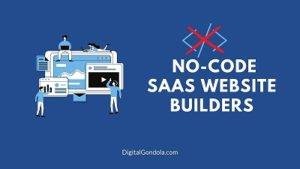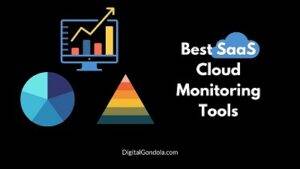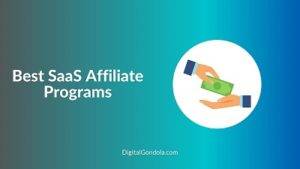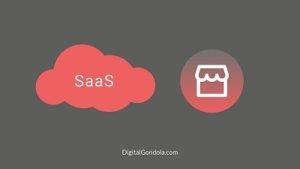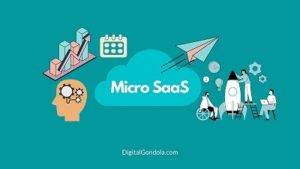
Software architects and product owners are responsible for optimizing technology costs by making innovative cloud applications. Your architecture defines your control over the infrastructure, customization options, and your control over data. Embracing the Software as Service model enables you to provide your customers services anywhere and anytime.
In addition, Software as a Service is more efficient than local software since it eliminates regular maintenance work. So, what are best SaaS management Platforms? What best practices should you embrace when developing a cloud application? Continue reading through this article to learn more.
What is a SaaS application?
Software as a service is a form of application delivered over the Internet. Most SaaS providers have on-demand pricing, meaning customers only pay for what they need. Because there’s no upfront cost and it’s easy to scale up and down, many companies find SaaS applications to be cheaper than traditional Software.
The user does not have to install anything on their local computer but can access it from any device connected to the Internet. The benefits of SaaS applications are many, including the ability for companies to change their technology without worrying about updating or upgrading their hardware or Software. This also means that companies do not have to invest in expensive IT support and can focus on other areas of their business.
What are the benefits of using a SaaS application?
There are several benefits that come as a result of using SaaS applications. Below are some of the main advantages of using SaaS applications:
1. Better Accessibility
SaaS improves the accessibility of applications. You can access all of your applications from any location at any given time as long as you have access to the Internet. This is convenient for users who need the facility when they are not near the office or traveling.
2. Lower Costs
Buying software in its original format can cost a lot of money, especially if it’s a complex application. This is why many companies prefer to use SaaS. You pay a fixed monthly or annual fee and keep using the Software indefinitely.
3. Backup Facilities
SaaS applications have backup facilities that allow you to save all your data and recover your database in case of any technical failure. This reduces resource wastage, as you won’t need to keep several backups simultaneously.
4. Better Integration
SaaS has a very high level of integration and compatibility, so it is easy to connect Software with other business resources. This makes SaaS a viable option for companies looking at the development of an integrated software application platform.
5. Easy Solution Updates
With SaaS, you have the option to update your applications whenever a new version is released. You need to download the latest version, and you are set to go.
6. Interoperability
SaaS applications are compatible with other software tools and systems. This means you can use your SaaS application with third-party Software and systems, thus integrating all of your data into one platform. This benefits any organization, as it reduces the need to purchase separate software applications for each system or tool.
7. Control
SaaS applications provide users with great control, so they will always be able to manage the performance of their systems in real-time. This helps software developers add extra features and fine-tune existing ones. There are controls for managing stored data, including where and how it is processed. Users can also access the data immediately and make any required changes. If you’re interested in SaaS management platforms you can find the complete article on the link.
How does a SaaS application work?
A SaaS application is a software solution that can be accessed through the Internet. SaaS apps are often more cost-effective and convenient than other types of applications. The term “software as a service” or “SaaS” is becoming more and more common in business and technology.
But because thousands are using it doesn’t mean people know what it means or why they should use one. Regardless, these applications are versatile for many levels of businesses and individuals who want an easy way to manage their work on their terms.
SaaS applications are typically delivered via a service-oriented architecture that multiple clients share. This approach to Software solves some of the problems with traditional software development practices, such as the need for custom application development for each client. Outsourcing pieces of the application and then “hosting” it on someone else’s infrastructure has the benefit of increasing agility and flexibility for businesses. Still, SaaS requires more skills than traditional software delivery methods to get started.
SaaS applications are paid per month or year. The Software is hosted by a provider and can be accessed via the Internet. SaaS applications are often cheaper than traditional software applications because they are based on the pay-as-you-go model.
What are the disadvantages of using a SaaS application?
Everything that has some advantages also has some disadvantages. SaaS is no exception to this rule. While a SaaS app can be beneficial for the small business owner, there are a few disadvantages you need to know about before deciding whether or not to use the SaaS application. Below are some of the disadvantages of using SaaS applications.
1. Lack of control
There is less control of SaaS applications compared to in-house Software. A SaaS app can be discontinued at any time, which means there is a risk of losing your data if the service provider goes out of business or loses data. This is expected when the user has their data stored in the cloud.
2. Security Risk
Data security is one of the biggest concerns when using SaaS apps. Unlike in-house Software, data stored in a SaaS app is not encrypted, and it will depend on the SaaS provider’s security features to protect your data from malicious attacks. A hacker or any other malicious user can access your data in case of an attack on the cloud server where your data is stored.
3. Limited growth potential
Growth potential is one of the major disadvantages of using a SaaS application since as your business grows, so does your need for storage space and connectivity speed which will increase the cost of providing service to more users.
When you start creating your SaaS application, start small and ensure that everything is working as expected. Expand your application as per your needs and start early testing to make sure everything is working. It is always better to start with the basic functions and then add new features with time.
Starting small helps you troubleshoot all problems before they become major issues. Suppose your application is not being used as per your expectations, and you need to make changes and pivot if needed. If you think the application is not gaining momentum as you thought, you can think about different strategies or even think about a completely different idea.
The application should be self-serve so that you’re less involved in day-to-day trivial tasks and focus on the bigger picture. This is a popular way of providing support since users don’t have to contact customer service for assistance. An SaaS application should be able to work on its own.The site should also be easy to use and not complicated. For any questions and concerts, users can find answers to most problems in faq section or contact support if really needed.
To ensure customers get the best service, monitoring their activity and collecting logs from the application are important. This helps identify problems and fix them before they become significant issues. For a detailed article on SaaS Cloud Monitoring, you can find it here.
Logging helps you understand where errors are coming from, such as when someone forgets to disable role-based access control or grants an unauthorized user access to customer data. Logs can also be used for troubleshooting purposes, including identifying what users were doing when an error occurred and tracking down problems in a timely manner.
Self-service dashboards and reports must be easy to interpret and analyze. You never know when there will be an error or problem with the application, but you can identify where the problem is coming from if it’s in your dashboard.
SaaS applications must also have a way of alerting users when something goes wrong with the application. This helps prevent major issues in case an issue occurs, and users can always check alerts to see what’s going on with the application. You can find more information in our article on best SaaS reporting tools.
Personalization is a necessity when it comes to SaaS applications as it makes them more useful. Personalization in SaaS software enables more specific workflows and benefits customers who want their work solutions customized to suit their needs.
Personalization also helps your users get the most out of the application and enable them to prioritize what they are working on. Users better understand how the application works, so they can efficiently use different features and integrate them properly into their workflow.
SaaS applications should be able to integrate with other services easily. This enables users to properly use your application, making the application simple for them. You can also integrate your application with other applications if you want to create a more sophisticated solution for your users. This will ultimately provide users with the best experience since they will have more options within the SaaS applications.
Choose the Best Cloud Provider
You should choose the best Cloud application provider every time you need one. Not all SaaS providers are equal, and some are better than others. It would help if you choose a provider that offers the best features, so you can get the best application for your business.
The best way to find the right Cloud provider is to do an in-depth analysis of all the providers out there. It’s important to discover which one is providing high-quality solutions. Some of the best Cloud service providers include Microsoft Azure, Amazon Web Service, and Google. Choose among these SaaS applications anytime when you want to expand your business.
SaaS applications should be able to be accessed by a larger device range. Once you are using a SaaS application, you should be able to access the application on different devices, including laptops and desktops, smartphones, and tablets. This will help you get more uses out of the application and improve your engagement. Mobile apps should have a good interface to ensure they can be used on multiple devices. So if you want to use a SaaS application, make sure it’s compatible with multiple devices.
Security and Compliance
The SaaS application should have security and compliance features. The best SaaS applications come with security measures in place. For example, you should be able to encrypt data and not share personal information with other users. You should also be able to submit a complaint to the SaaS application whenever you want. This will help you get the most out of the application, and it’s a way to get your gripes heard. For more details, we have detailed information on SaaS security tools for cloud applications.
Your application should be able to scale horizontally for it to scale easily if the traffic increases. Doing so will enable you to have your server close to capacity. This will give you more stability, and if the traffic to your application is high, then this is the best way to go. The main objective of SaaS is to shift the burden of maintaining, developing, and managing the infrastructure from software owners to third-party service providers.
You should be able to enlarge your database with ease. There should be no need to rewrite code when you want to get more storage or data. You should be able to scale your database easily, and the application should take care of everything for you. The scaling of your database and server should be independent of each other.
